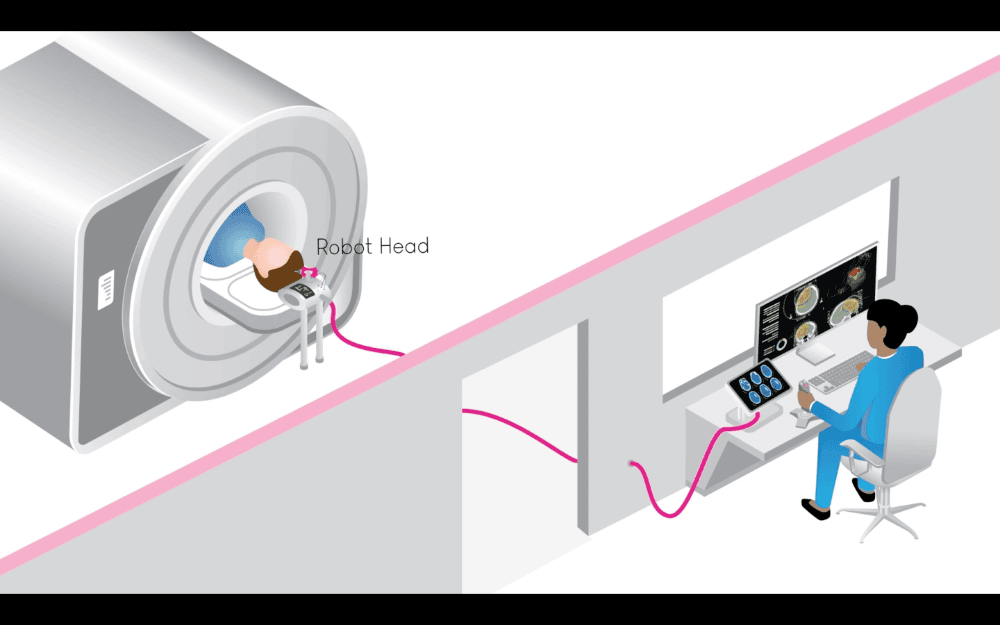Symphony Robotics secures licence for micro-robotic neurosurgery tech
Symphony Robotics has obtained exclusive rights to an MRI-guided flexible micro-robotic arm technology from Case Western Reserve University, aimed at revolutionising brain tumour treatment, particularly for Glioblastoma Multiforme (GBM), through minimally invasive precision surgery.
Innovative approach to neurosurgical challenges
The newly licensed technology combines micro-robotic arms with real-time computer vision and artificial intelligence to enable neurosurgeons to perform complex microsurgical procedures with unprecedented precision. This significant advancement could reduce craniotomy sizes from the current clinical norm to less than 4 millimetres—approximately a tenfold reduction.
The system’s distinguishing feature is its ability to navigate non-linear trajectories, allowing surgeons to access deep-seated lesions whilst minimising damage to surrounding healthy brain tissue. This capability is particularly valuable for treating GBM, one of the most aggressive forms of brain cancer, where conventional surgical approaches often necessitate large skull openings that can result in trauma to eloquent brain regions.
Technical foundations and development
Symphony’s technology leverages two proprietary advancements: utilising the magnetic capabilities of MRI systems for non-linear navigation of the micro-robotic arms and enabling real-time guidance through high-resolution MRI imaging. This approach allows for the precise targeting of geometrically complex pathologies that may be otherwise challenging to treat.
The technology, which has been in development at Case Western Reserve University for over a decade, received substantial support from both the National Institutes of Health (NIH) and the National Science Foundation (NSF). This ongoing collaboration demonstrates the significant investment in advancing neurosurgical techniques for improved patient outcomes.
“Our technology will introduce unprecedented advancements in neurosurgery. The potential to enhance surgical precision and improve patient outcomes is truly groundbreaking. Neurosurgeons will be able to perform highly targeted procedures on deep-seated pathologies through significantly smaller surgical openings—down to the micro level—while navigating complex, geometrically dispersed pathologies with greater safety and accuracy,” stated Symphony Robotics founder and CEO, Mordechai (Moty) Avisar.
Clinical perspectives and future applications
The potential clinical impact of this technology extends beyond GBM to other neurological conditions such as epilepsy. By enabling microsurgical interventions through significantly smaller access points, the system may reduce recovery times and allow for earlier initiation of adjuvant therapies such as radiation and chemotherapy.
Dr Robert Louis of the Pickup Family Neurosciences Institute, Hoag Memorial Hospital in Newport Beach, California, offered his professional assessment: “The micro-robotic arm’s MRI-compatible maneuverability will allow neurosurgeons to perform complete ablations through a single micro-opening, even in lesions that are otherwise untreatable due to their location and/or shape. This innovation could reduce the insertion hole size from something akin to a coffee cup to that of a small stirring straw. Could craniotomies become obsolete? It certainly seems possible.”
Path to clinical implementation
Symphony Robotics is preparing for nationwide testing in collaboration with partner hospitals throughout the United States. The company emphasises that the technology is not yet available for clinical use and has not received clearance from the US Food and Drug Administration.
This development represents a significant advancement in the field of neurosurgery, potentially offering new hope for patients with complex brain pathologies that are currently difficult to treat using conventional surgical approaches.
- For more information, visit: https://www.symphonyrobotics.health


